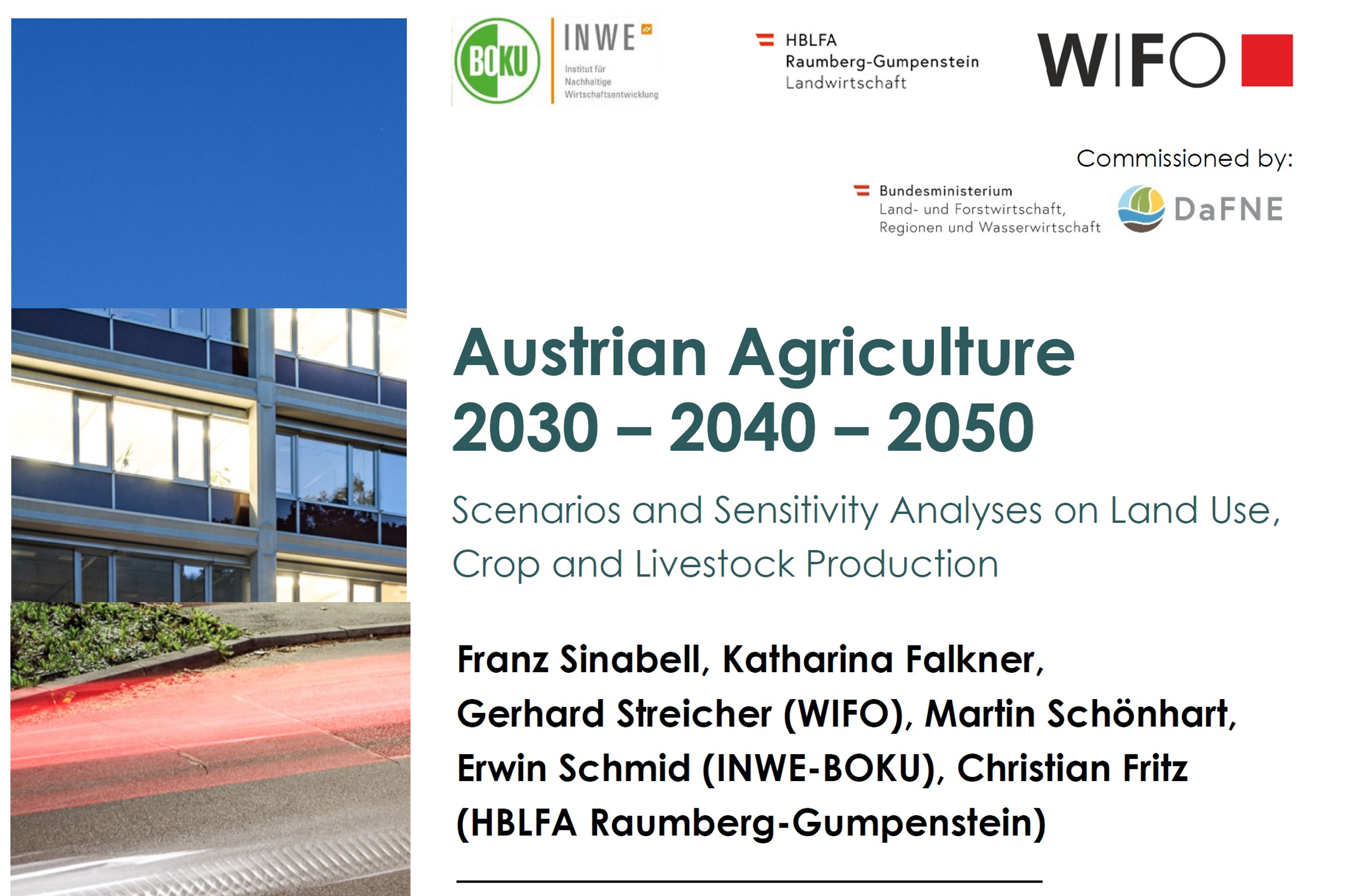Development of scenarios for the sector
For the development of greenhouse gas reduction measures at the sectoral level, an assessment of future changes in the sector is important. How many areas will be cultivated in 2030, 2040 and 2050 and how many animals will be kept in Austria? Corresponding assessments can be made based on international population and market forecasts for Austria. Emissions depend heavily on production activity, and climate protection measures only have a long-term effect. Therefore, possible savings options can only be calculated based on this data and evaluated economically for Austrian agriculture.
In the KLILASZ project, the scenarios were defined in a stakeholder process that accompanied the project and coordinated with various interest groups. The project was organized in an interdisciplinary manner and analyzed the topic from the perspective of agricultural and climate policy and from a business perspective and also looked at various technical options for avoiding greenhouse gases. WIFO (Franz Sinabell) and INWE-BOKU (Erwin Schmid) and their employees carried out quantitative evaluations based on the land use model PASMA (Positive Agricultural and Forestry Sector Model of Austria), which was supplemented by further modules up to 2030 and To quantitatively model the measures to reduce greenhouse gases in agriculture that are foreseeable in 2040.
https://dafne.at/projekte/klilasz
Calculation of greenhouse gas reduction options
The HBLFA Raumberg-Gumpenstein introduced possible greenhouse gas reduction options at the agronomic level into the project. The focus here was on options for action that can lead to savings at the process and procedure level without significantly changing the production structures. One aim of the selection of the proposed solutions was to ensure that their effects were scientifically proven and that they were also technically and economically feasible for agricultural businesses in Austria. The project report shows details of two dozen possible options for action for the sector and describes their savings potential and the associated savings costs.
The detailed results are available in the article below.







